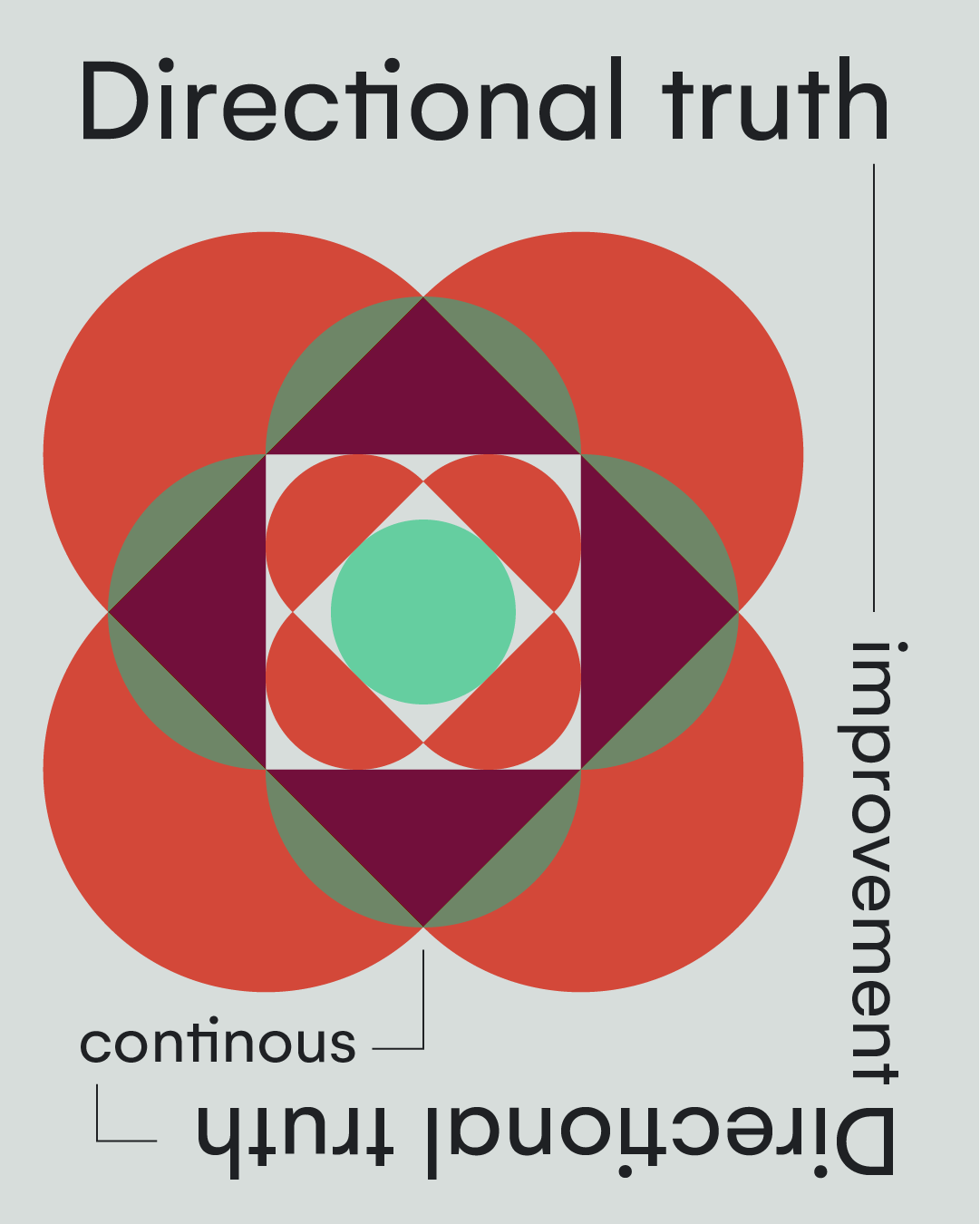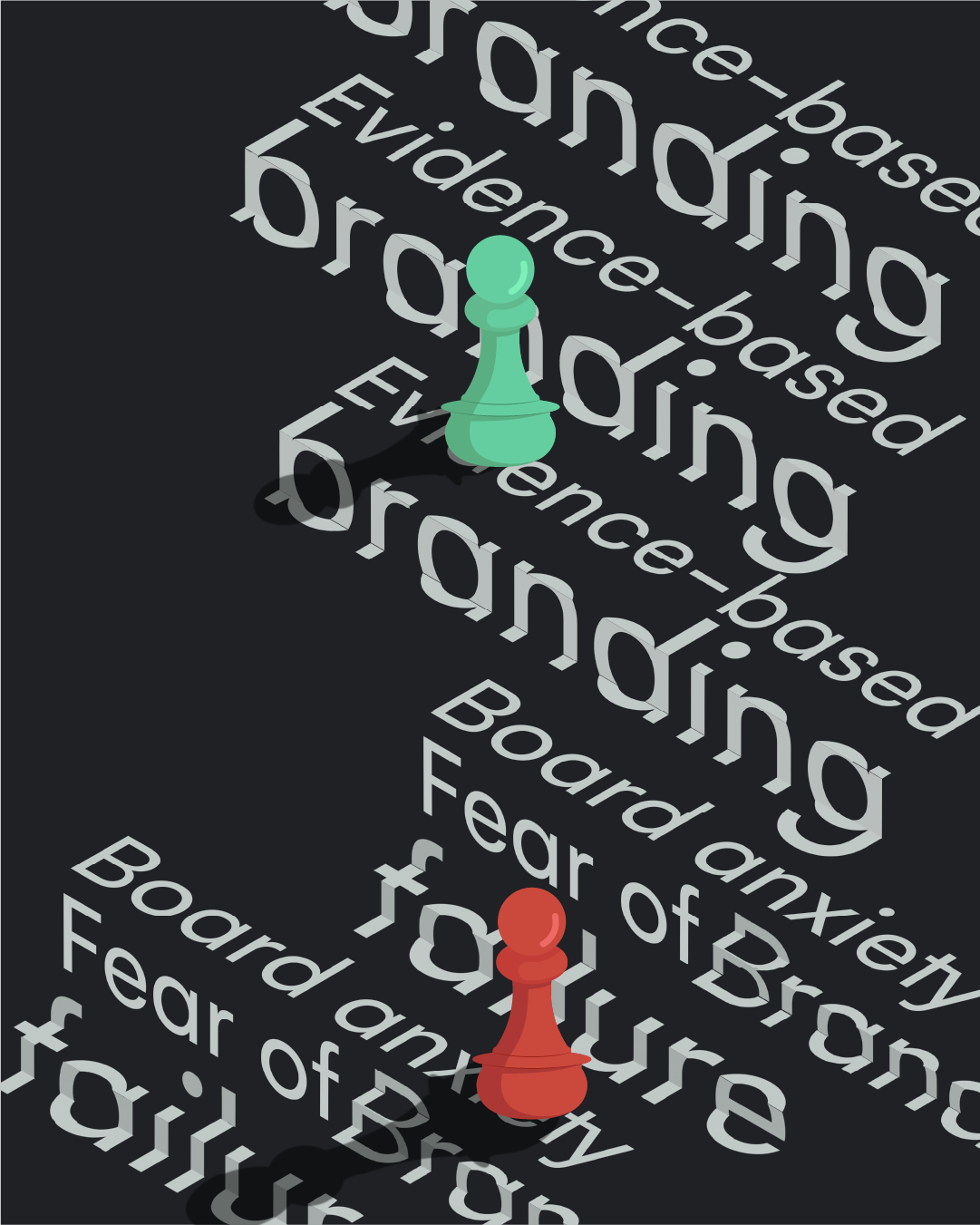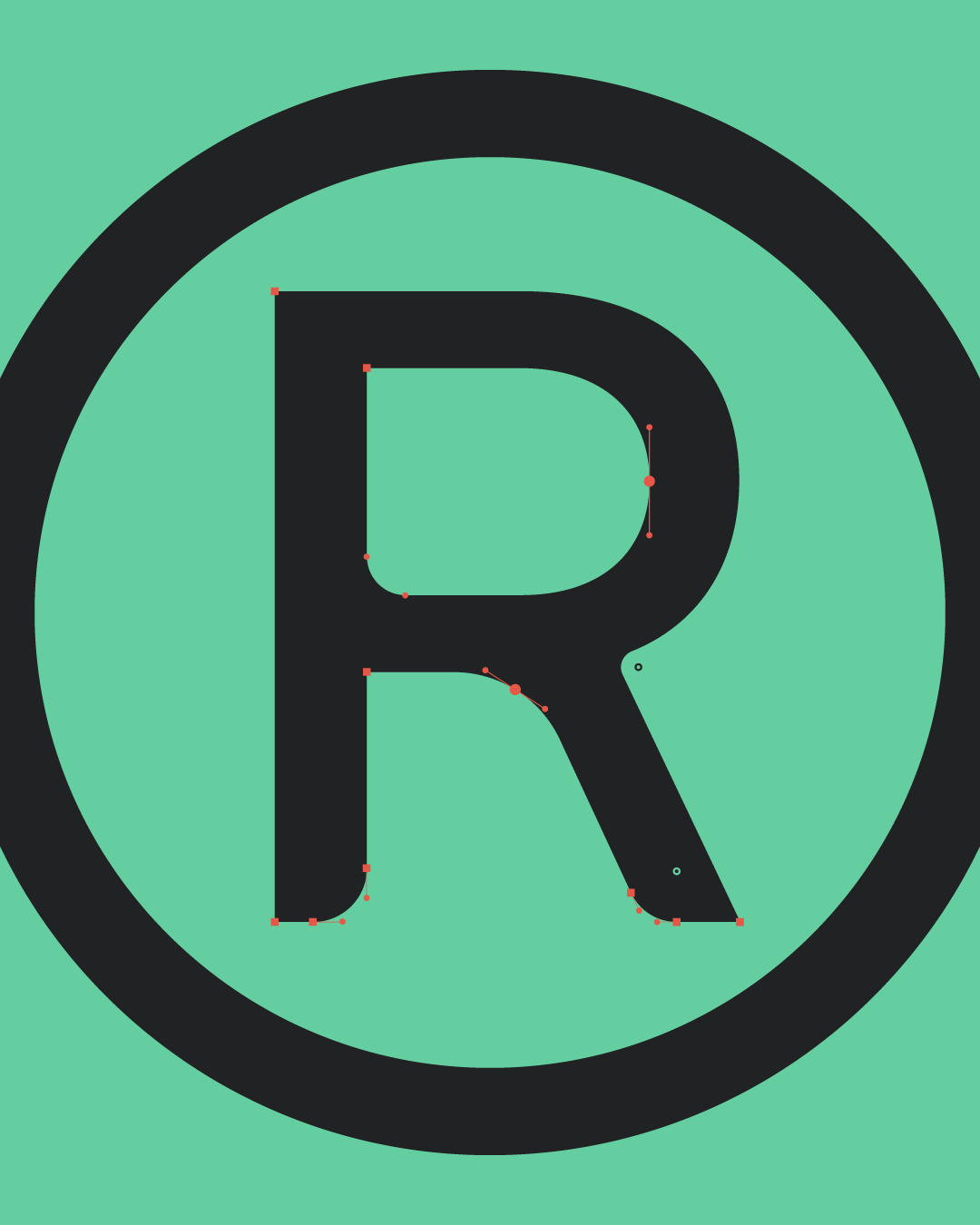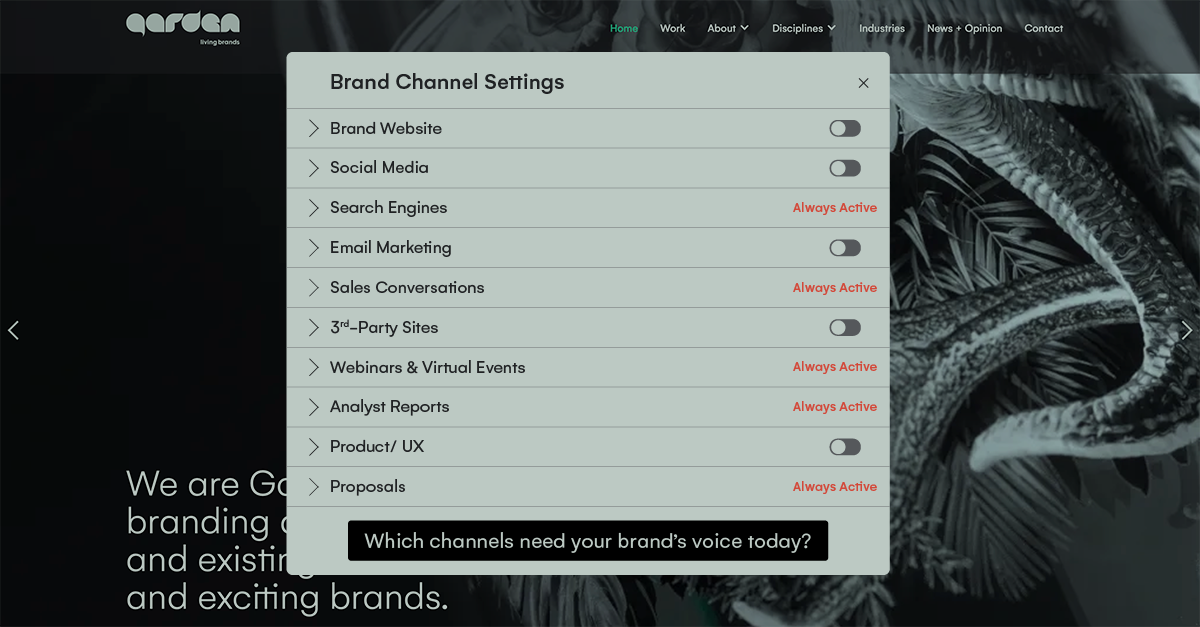What is a brand voice guideline and what should it include?
Picture walking into your favourite coffee shop. You know exactly what to expect - from the greeting of the barista to the way they explain the daily specials. Their communication style never wavers, whether you're chatting in person, reading their menu board, or following them on social media. That's the power of a strong brand voice in action.
Brand voice guidelines are much like that coffee shop's approach to customer service. They create the framework for how your brand communicates, ensuring everyone who represents your company - from the marketing team to customer service - speaks in a unified, recognisable way that resonates with your audience.
As businesses grow, maintaining consistent communication becomes increasingly challenging. Whether you're a startup defining your voice for the first time or an established company refining your guidelines, understanding what makes effective brand voice guidelines is crucial for connecting with your audience authentically.
Let's explore what brand voice guidelines are, why they matter, and most importantly, what essential elements they should include to help your brand communicate effectively.
Brand voice guidelines explained
Brand voice guidelines serve as the cornerstone of your company's communication strategy. They define how your brand expresses itself across all platforms and touchpoints, ensuring your message remains consistent and authentic. Think of them as your brand's personality manual – they capture the distinctive way your brand speaks to its audience.
More than just a set of rules, brand voice guidelines embody your organisation's values, personality and communication style. They help establish the specific language, tone and expressions that make your brand instantly recognisable, whether someone's reading your website copy, social media posts or marketing materials.
The key distinction between voice and tone is essential to understand. Your brand voice remains constant – it's your brand's fundamental personality and style. However, tone can shift based on context while still maintaining that core voice. For example, a brand might maintain a friendly, helpful voice but adjust its tone to be more empathetic when handling customer concerns or more celebratory when sharing company achievements.
Brand voice guidelines play a crucial role in building brand identity by:
- Creating a consistent experience across all customer touchpoints
- Helping your brand stand out in a crowded marketplace
- Building trust through familiar, reliable communication
- Enabling teams to create content that truly represents your brand
- Fostering stronger connections with your target audience
Core elements of brand voice guidelines
The foundation of effective brand voice guidelines rests on several key elements that work together to create a comprehensive framework for communication.
Brand personality characteristics
Your brand's personality traits form the backbone of your voice. These characteristics should reflect your company's values and resonate with your target audience. For example, your brand might be:
- Friendly and approachable
- Professional and authoritative
- Playful and energetic
- Honest and straightforward
- Innovative and forward-thinking
Tone variations
While your voice remains consistent, your tone should adapt to different situations. Your guidelines should outline how to adjust tone whilst maintaining your core voice across various contexts:
- Customer service interactions
- Educational content
- Crisis communication
- Celebrations and achievements
- Product announcements
Writing style and standards
Clear writing standards help maintain consistency across all communication channels. This includes:
- Preferred writing style (formal vs casual)
- Sentence structure preferences
- Paragraph length guidelines
- Use of contractions and colloquialisms
- Punctuation and formatting conventions
Essential components to include
Creating effective brand voice guidelines isn't just about listing rules - it's about building a comprehensive resource that truly captures your brand's essence. Let's explore the key components that make your guidelines both practical and inspiring.
Brand values and mission alignment
Your brand voice should flow naturally from your company's values and mission. Think about how your organisation's core beliefs translate into everyday communication. For instance, if transparency is a key value, your communication style might emphasise clear, straightforward language without corporate jargon. Show your team how to weave these values into their writing while maintaining the perfect balance between professionalism and personality.In summary, this section should include:
- Define how your values translate into communication style
- Provide examples of value-aligned messaging
- Explain how to weave your mission into everyday communication
- Show how to balance professionalism with personality
Target audience persona insights
Understanding your audience is crucial for developing an effective brand voice. Consider who you're speaking to - their preferences, pain points, and communication styles. If your target audience consists of busy professionals, they might appreciate concise, direct communication. On the other hand, if you're targeting creative entrepreneurs, a more imaginative and expressive voice might resonate better. Your guidelines should help team members understand these nuances and adapt accordingly.In summary, this section should include:
- Detailed audience profiles and preferences
- Communication preferences for each segment
- Language that resonates with your audience
- Topics and approaches that engage your target market
Voice characteristics framework
Think of your brand voice characteristics as your brand's personality traits - they're the core attributes that make your brand uniquely you. Rather than simply listing these traits, explain what they mean in practice. For example, if one of your characteristics is 'friendly', describe what friendly looks like in your brand's context. Is it using casual language? Asking questions? Adding personal touches to communication? Provide real examples that bring these characteristics to life.In summary, this section should include:
- Primary voice characteristics (3-5 core traits)
- Explanations of what each characteristic means in practice
- Examples of these characteristics in action
- Contrasting examples showing what to avoid
Dos and don'ts examples
Nothing clarifies guidelines better than seeing them in action. Share real-world examples that showcase your brand voice at its best, and contrast these with examples that miss the mark. For instance, if your brand adopts a conversational tone, show how to transform formal, stilted writing into something more approachable. These practical examples help team members understand not just what to do, but why certain approaches work better than others.
Common phrases and terminology
Every brand has its own vocabulary - the words and phrases that feel natural to its voice. Create a living glossary that helps team members choose the right language. This isn't just about listing preferred terms; it's about helping writers understand the reasoning behind these choices. Explain why certain phrases align better with your brand voice than others, and provide alternatives for commonly overused expressions.
Creating your brand voice document
The process of creating brand voice guidelines is a bit like crafting your brand's personality profile - it requires thought, collaboration, and a deep understanding of who you are as a business. Let's walk through how to build this crucial document.
Voice attribute definition process
Finding your brand's voice starts with asking the right questions. Sit down with your team and key stakeholders to explore what makes your brand unique. Look at your most successful content - what tone resonates with your audience? How do your competitors communicate, and how can you stand out? This exploration helps identify the distinctive characteristics that will define your brand's voice.
Personality trait exercises
Developing your brand's personality shouldn't be a solo endeavour. Bring your team together for interactive sessions that help define your brand's character. One effective approach is to imagine your brand as a person - how would they speak? What would their personality be like? These exercises might feel playful, but they're incredibly valuable for creating a voice that feels authentic and consistent.
Tone spectrum mapping
While your brand voice stays consistent, your tone needs flexibility to handle different situations appropriately. Think of it like how you might adjust your speaking voice - you'd use a different tone when sharing exciting news versus addressing a concern. Create clear guidelines for when and how to shift tones while maintaining your core voice. This helps your team navigate everything from celebratory announcements to customer service interactions with confidence.
Language style selection
The words you choose matter as much as how you use them. This is where you'll establish the nitty-gritty details of your brand's language preferences. Should your writing be more formal or conversational? How do you handle industry jargon? What about regional variations in language? These decisions help create consistency across all your communications whilst ensuring your content remains accessible and engaging for your audience.Remember, your brand voice guidelines shouldn't feel like a restrictive rulebook. Instead, think of them as a helpful resource that empowers your team to communicate confidently and consistently. The best guidelines strike a balance between being comprehensive enough to provide clear direction and flexible enough to allow for creativity and authentic expression.Your guidelines should evolve as your brand grows and changes, but the core principles should remain steady. This creates a foundation for consistent, effective communication that builds trust with your audience and strengthens your brand identity over time.
Language & demographic splits
There are many complex challenges when working with global brands, a single voice is important, and that single voice should have a ‘mostly’ consistent tone that works across all cultures. However, the intricacies of language and culture can be harder to navigate.
For example, a retail brand that prides itself on customer service and has a strong and well aligned tone to its values, mostly should travel well, but subtle nuances can be hard to translate when moving to a new culture, and what may have worked well in one culture can sometimes fail in others. A good example of this are brands that lean into humour, the obvious reason being that humour in say India, is very different than say that of the UK, and what may have started out as light fun intended to bring a smile, can sometimes endure rage if the tone and intent isn't clear, or maybe the slapstick humour of one country may well be seen as too basic for others.
Let Garden help shape your brand voice
At Garden Studio, we understand that defining your brand voice is more than just putting words on paper - it's about capturing the essence of who you are and expressing it in a way that resonates with your audience. We have a strong pedigree of far reaching brands that cross some complex cultural divides, brands like Janes, Mobily and Mollie’s are just a few that demonstrate sensitive approaches to these challenges.
As a brand strategy and creative branding consultancy, we specialise in crafting authentic brand voices that stand out in today's crowded marketplace. We interpret trends in human behaviour through tailored tools that help maximise your product or service effectiveness.
Our methodology means we work closely with you to understand your values, audience, and aspirations.Ready to develop a distinctive brand voice that truly represents your business? Get in touch with Garden to start crafting guidelines that will empower your team and engage your audience.














.jpg)





































































